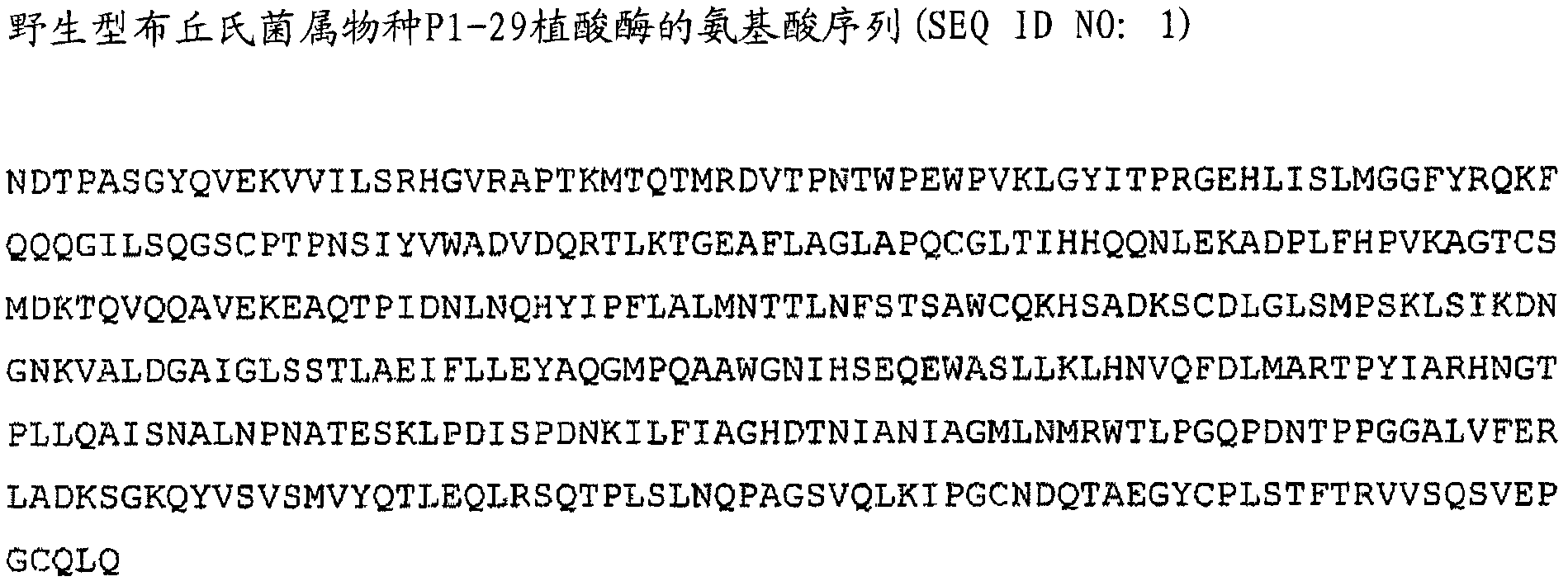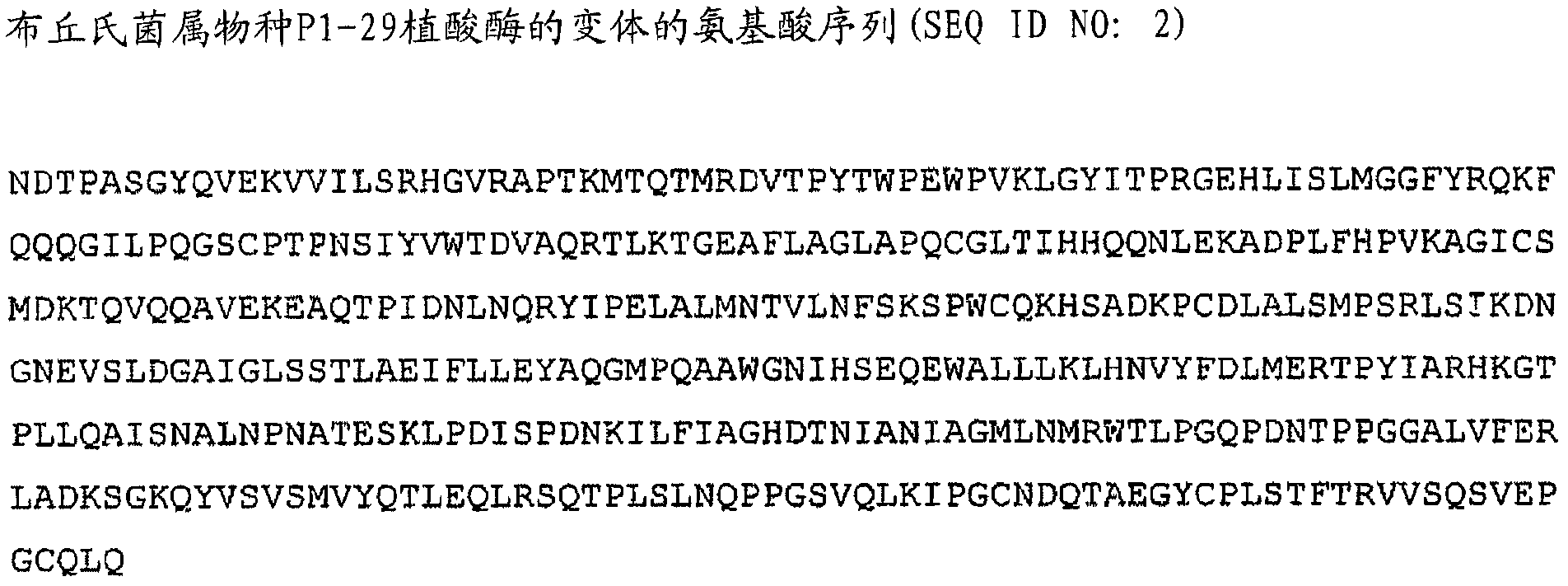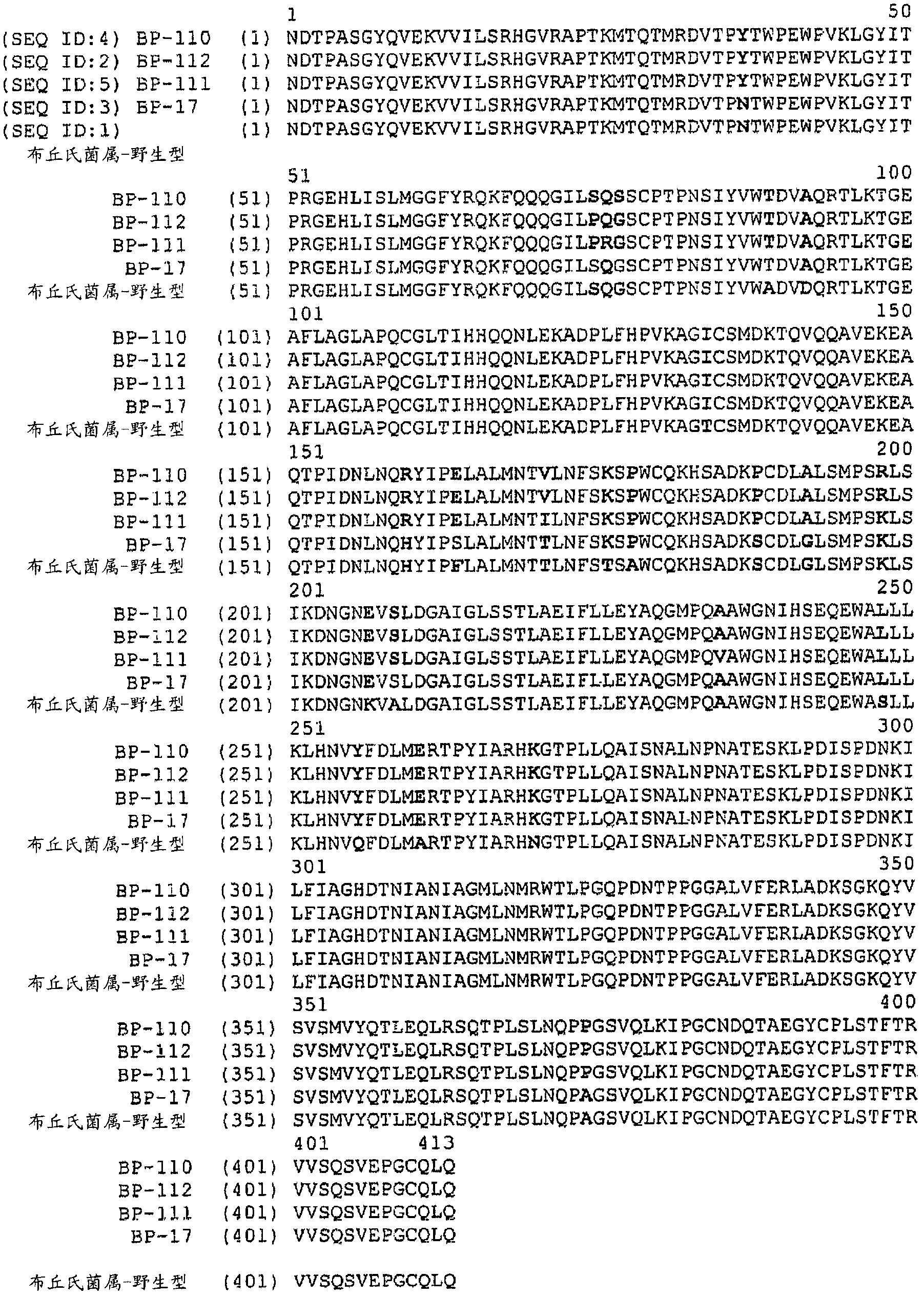Feed supplement
A supplement, feed technology, applied in the field of feed including feed supplements, which can solve problems such as limited growth or feed efficiency
- Summary
- Abstract
- Description
- Claims
- Application Information
AI Technical Summary
Problems solved by technology
Method used
Image
Examples
preparation example Construction
[0439] Preparation of phosphate standard curve (absolute method)
[0440] use KH 2 PO 4 Buffer (1.2) A standard curve was prepared. Standards were diluted with acetate buffer.
[0441] C 稀释 = 0.0mM, 0.5mM, 1.0mM, 1.5mM, 2.0mM, 2.5mM, 3.0mM, 4.0mM
[0442] Use the following formula: C 原液 *V 原液 =C 稀释 *V 稀释
[0443] V 原液 =(C 稀释 *V 稀释 ) / C 原液
[0444] where C = concentration, V = volume
[0445]
[0446]1.00 ml of the standard curve sample was mixed with 2.00 ml of staining / stopping reagent and then mixed with 2.00 ml of phytate solution. Samples were incubated at room temperature for 5-10 minutes and OD was measured (measured on samples after incubation).
[0447] sample preparation :
[0448] 1A: Liquid product (approximately 5500FTU / g): Weigh 1g of sample into a 100ml volumetric flask, record the weight, and fill the volumetric flask with acetate buffer.
[0449] 1B: Dry product (phytase formulated on wheat / starch carrier only): 1 g of prod...
Embodiment
[0501] Example 1 - Introduction
[0502] In order to be effective as an enzyme additive in food or animal feed, phytase must have a variety of different properties. To be able to degrade phytic acid in the acidic environment of the animal's stomach, it must be active at low pH, preferably over a broad pH range. In addition, it must have a high specific activity and preferably a high thermostability so that it, as a protein, can withstand the high temperatures common in the preparation of feed, such as pelleted feed.
[0503] Also importantly, the enzyme has a broad substrate specificity that allows it to hydrolyze not only phytate but also intermediates of phytate degradation such as inositol pentaphosphate, tetraphosphate and triphosphate. Studies on the degradation of phytate in pigs have shown that without this enzyme these inositol oligophosphates remain largely insoluble in the small and large intestines, leaving them inaccessible to alkaline phosphatase produced by th...
Embodiment 2
[0508] Embodiment 2 pepsin stability
[0509] Phytase variants BP-17, BP-110, BP-111, BP-112 and Phyzyme XP from Buttjuia sp. compared to Natuphos (BASF) and Ronozyme P (Novozymes / DSM) at pH 2 Pepsin resistance.
[0510] Materials and methods
[0511] buffer :
[0512] Pepsin incubation buffer: 0.1 M Glycine-HCl, pH 2.0, 3 mg / ml BSA, 2.9 mg anhydrous sodium chloride / mL, 0.73 mg calcium chloride / mL. For pepsin-containing solutions, incubation buffers were prepared to contain 500, 1000, 3000, 6000 or 10000 U / ml pepsin (SigmaP-7000, 10000 U / mg corresponds to 27 mg / ml), respectively. One pepsin unit is defined as will produce a ΔOD of 0.001 per minute at pH 2.0, 37°C 280 The amount of enzyme was measured as a soluble product of TCA using hemoglobin as substrate (American Food Chemicals Codex).
[0513] Phytase assay buffer: Acetate buffer 250mM, pH 5.5
[0514] Phytase assay buffer containing BSA: Acetate buffer 250mM, pH 5.5, containing 3mg / ml BSA
[0515] Resistance...
PUM
| Property | Measurement | Unit |
|---|---|---|
| correlation coefficient | aaaaa | aaaaa |
Abstract
Description
Claims
Application Information
 Login to View More
Login to View More - R&D
- Intellectual Property
- Life Sciences
- Materials
- Tech Scout
- Unparalleled Data Quality
- Higher Quality Content
- 60% Fewer Hallucinations
Browse by: Latest US Patents, China's latest patents, Technical Efficacy Thesaurus, Application Domain, Technology Topic, Popular Technical Reports.
© 2025 PatSnap. All rights reserved.Legal|Privacy policy|Modern Slavery Act Transparency Statement|Sitemap|About US| Contact US: help@patsnap.com



